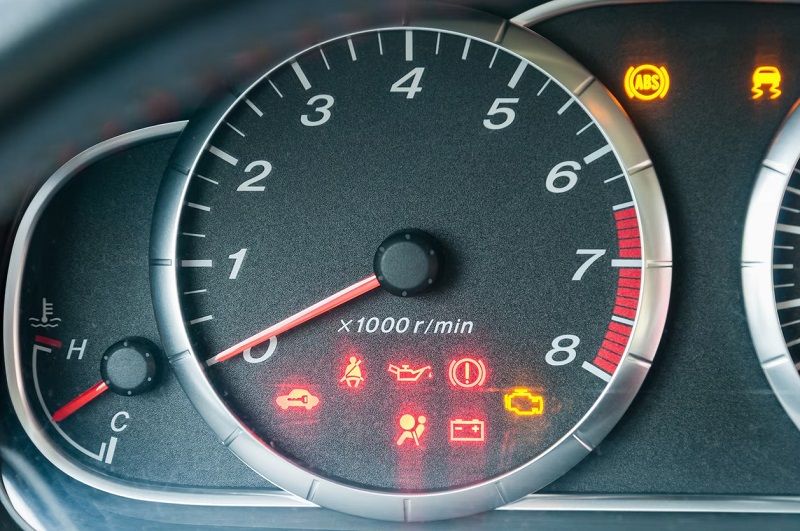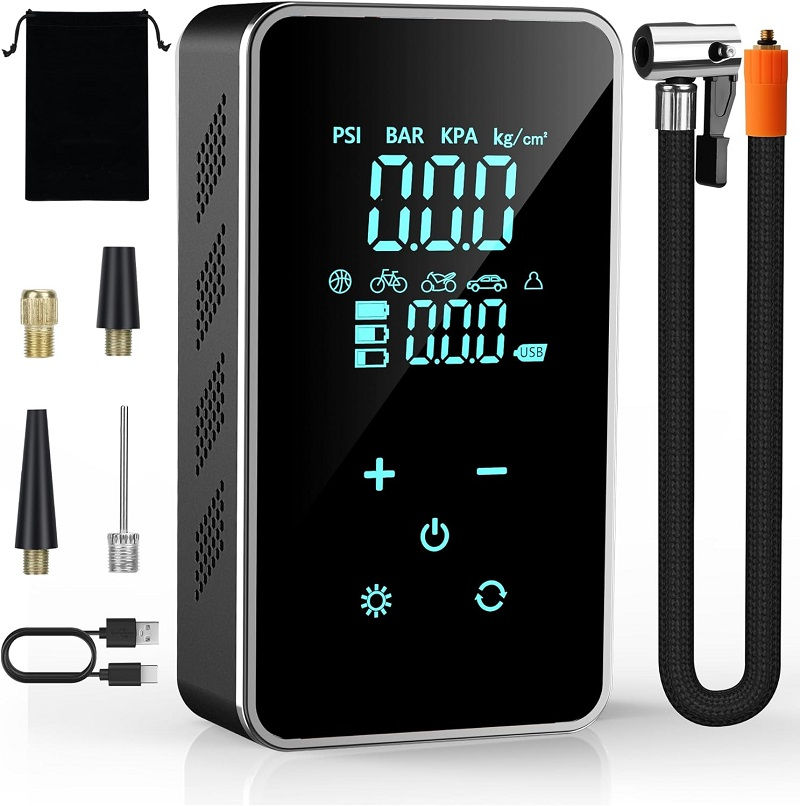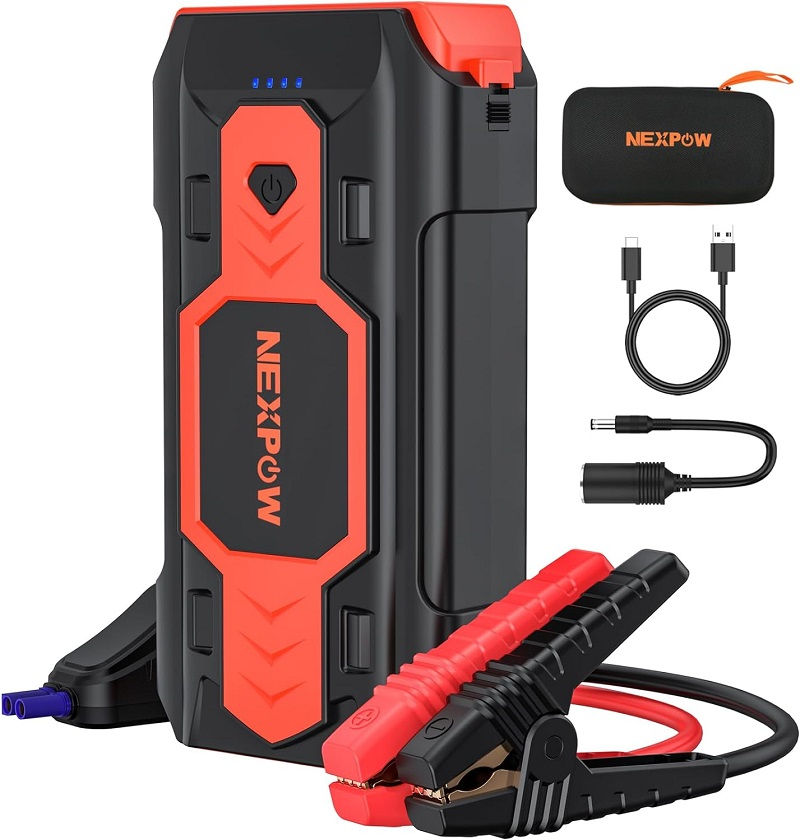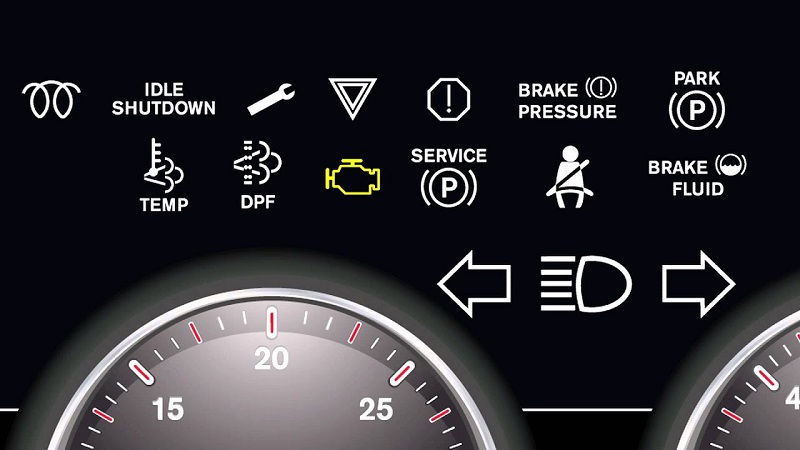This post contains affiliate links. This means I will make a commission at no extra cost to you should you click through and make a purchase [ “As an Amazon Associate, I earn from qualifying purchases.” ]. Read the full disclosure here.
Instrument Panel Lights GuideMechanic.Com When it comes to driving, your instrument panel lights play a crucial role in providing you with essential information about your vehicle’s performance and safety.
From indicating fuel levels to warning about potential issues, these lights are designed to ensure a smooth and safe driving experience.
In this comprehensive guide, we will delve into the world of instrument panel lights, exploring their various types, meanings, and how to troubleshoot common problems.
Whether you’re a seasoned driver or a new car owner, understanding these lights is essential for maintaining your vehicle’s health and ensuring your own safety on the road.
The Importance of Instrument Panel Lights

Driving a vehicle requires constant monitoring of various factors to ensure a safe and efficient journey. Instrument panel lights offer an immediate visual representation of your vehicle’s status and provide critical information.
See Also: H11B Bulb: Installation Guide for H11B Bulbs
They serve as a communication tool between your vehicle and you, allowing you to make informed decisions while on the road. Without these lights, drivers would be left in the dark, unaware of potential hazards or malfunctions.
Enhancing Safety on the Road
Instrument panel lights are crucial for enhancing safety on the road. By alerting drivers about potential issues or malfunctions, these lights enable prompt action, preventing accidents or breakdowns.
For example, the check engine light warns drivers about problems with the engine, allowing them to seek professional assistance before the issue worsens.
Similarly, the low fuel warning light ensures drivers are aware of their fuel levels, preventing the inconvenience and potential danger of running out of gas in the middle of the road.
Providing Essential Information
Instrument panel lights provide valuable information about your vehicle’s performance and settings. From indicating the engagement of turn signals to displaying the current speed, these lights enable drivers to stay informed and make necessary adjustments.
The oil pressure light, for instance, alerts drivers to low oil pressure, indicating the need for immediate attention to avoid engine damage.
Additionally, the seatbelt indicator light reminds occupants to buckle up, promoting safety and compliance with traffic laws.
Types of Instrument Panel Lights
Instrument panel lights come in various types, each serving a specific purpose. Understanding the different types and their meanings is essential for interpreting the signals your vehicle is sending you. Let’s explore the most common types of instrument panel lights and what they signify:
Warning Lights
Warning lights are designed to alert drivers about potential issues or malfunctions in their vehicle. These lights typically illuminate in red or amber and require immediate attention. Let’s take a closer look at some of the most common warning lights:
The Check Engine Light
The check engine light is one of the most dreaded warning lights for many drivers. It typically indicates a problem with the engine or related components. However, it is essential to note that the check engine light does not provide specific details about the issue.
To diagnose the problem accurately, it’s best to consult a qualified mechanic or use an OBD-II scanner to read any associated trouble codes.
The Oil Pressure Light
The oil pressure light alerts drivers to low oil pressure levels in the engine. Low oil pressure can lead to serious engine damage if left unaddressed.
When this light illuminates, it’s crucial to pull over safely and check the oil level. If the oil level is adequate, it is recommended to seek professional assistance as soon as possible to determine the cause of the low oil pressure.
The Battery Light
The battery light indicates an issue with the vehicle’s charging system. It could signify a faulty alternator, a loose or damaged battery connection, or a dying battery.
When this light illuminates, it’s important to have the charging system checked promptly to prevent the battery from dying while on the road.
Indicator Lights
Indicator lights provide information about various vehicle functions or settings. Unlike warning lights, they are typically less urgent and serve as reminders or status indicators. Let’s explore some common indicator lights:
The Turn Signal Indicator
The turn signal indicator lights up when the turn signal lever is engaged, notifying other drivers of your intention to turn or change lanes. It is crucial to use this indicator appropriately to ensure safe and predictable driving maneuvers.
The High Beam Indicator
The high beam indicator lets you know when you have activated your vehicle’s high beam headlights. It is essential to use high beams responsibly, ensuring you switch to low beams when approaching other vehicles to avoid blinding drivers and compromising safety.
The Seatbelt Indicator
The seatbelt indicator light serves as a reminder for both the driver and passengers to buckle up. It is important to always wear seatbelts, as they are proven to significantly reduce the risk of injury or death in the event of a collision.
Understanding Warning Lights
Warning lights are crucial for alerting drivers about potential issues or malfunctions in their vehicle. They provide immediate notification of problems that require attention to prevent further damage or potential hazards. Let’s dive deeper into some of the most common warning lights and their meanings:
The ABS Warning Light
The ABS warning light indicates a problem with the Anti-lock Braking System (ABS). This system helps prevent wheel lock-up during sudden braking, enhancing vehicle control and stability.
See Also: 2006 Silverado Headlights – Installation & Cost
When this light illuminates, it is advisable to have the ABS system checked by a qualified mechanic to ensure it is functioning properly.
The Tire Pressure Monitoring System (TPMS) Light

The TPMS light alerts drivers to low tire pressure or a malfunction in the tire pressure monitoring system. Properly inflated tires are essential for safe driving and optimal fuel efficiency.
If this light illuminates, it is important to check your tire pressure and inflate them to the recommended levels. If the tire pressure is adequate, there may be an issue with the TPMS that requires professional attention.
The Airbag Warning Light
The airbag warning light indicates a problem with the vehicle’s airbag system. Airbags are a vital safety feature that provides protection in the event of a collision.
When this light illuminates, it is crucial to have the airbag system inspected and repaired by a qualified technician to ensure it functions correctly in an emergency.
The Engine Temperature Warning Light
The engine temperature warning light alerts drivers to an overheating engine. This light typically illuminates when the engine coolant temperature exceeds the normal range.
When this happens, it is important to pull over safely, turn off the engine, and allow it to cool down. Driving an overheating engine can cause severe damage to the engine components.
Decoding Indicator Lights
Indicator lights provide information about various vehicle functions or settings. They serve as reminders or status indicators, guiding drivers and promoting safe and efficient driving habits. Let’s explore some common indicator lights and what they signify:
The Fuel Indicator
The fuel indicator light illuminates when your vehicle’s fuel level is low. It serves as a reminder to refuel and prevent the inconvenience of running out of gas. It’s important to address this warning promptly, as running out of fuel can lead to engine damage and leave you stranded on the road.
The Temperature Indicator
The temperature indicator light, also known as the coolant temperature light, alerts drivers to abnormal engine temperature.
If this light illuminates, it indicates that the engine is running hotter than usual, possibly due to a malfunctioning cooling system. It’s important to address this issue promptly to prevent engine damage.
The Battery Indicator
The battery indicator light notifies drivers of a potential issue with the vehicle’s battery or charging system.
If this light illuminates, it could indicate a faulty alternator, a weak battery, or a loose connection. It’s important to have the charging system checked to avoid unexpected battery failure and potential breakdowns.
The Oil Indicator
The oil indicator light reminds drivers to check their oil levels regularly. If this light illuminates, it indicates low oil pressure or low oil level.
It is crucial to address this warning promptly by checking the oil level and adding oil if necessary. Neglecting proper oil maintenance can lead to engine damage and costly repairs.
Troubleshooting Instrument Panel Lights
While instrument panel lights are designed to provide essential information and warnings, they may occasionally illuminate unexpectedly or stay on when there are no apparent issues.
See Also: 1994 Chevy Silverado Headlights Not Working
Troubleshooting these lights can help identify and resolve any underlying problems. Let’s explore some common troubleshooting steps:
Check for Loose Connections
In some cases, instrument panel lights may illuminate due to loose electrical connections. Start by checking the connections behind the instrument panel to ensure they are secure.
If you find any loose connections, gently reattach them and see if the lights turn off. If the lights persist, further investigation may be necessary.
Inspect and Replace Bulbs
Over time, bulbs behind instrument panel lights may burn out, causing them to dim or stop functioning altogether.
Inspect the bulbs and replace any that are faulty. It’s important to use bulbs that are compatible with your vehicle’s make and model to ensure proper functionality.
Address Sensor Malfunctions
Instrument panel lights are often triggered by sensors throughout the vehicle. If a particular light remains illuminated despite no apparent issues, there may be amalfunctioning sensor.
Consult your vehicle’s manual or a qualified mechanic to identify the sensor associated with the specific light and have it inspected or replaced if needed. Sensor malfunctions can lead to inaccurate readings and unnecessary warnings.
Check for Faulty Instrument Cluster
In some cases, instrument panel lights may stay illuminated due to a faulty instrument cluster. If you have ruled out loose connections, bulb issues, and sensor malfunctions, it’s possible that the instrument cluster itself is experiencing a malfunction.
In such cases, it may be necessary to have the instrument cluster repaired or replaced by a professional technician.
Use Diagnostic Tools
If troubleshooting steps are unsuccessful in identifying the cause of persistent instrument panel light issues, it may be beneficial to use diagnostic tools.
An OBD-II scanner can help read trouble codes associated with certain warning lights, providing more specific information about the underlying problem. This information can assist you or a mechanic in accurately diagnosing and resolving the issue.
Preventive Maintenance for Instrument Panel Lights

Maintaining your instrument panel lights is crucial for their optimal functionality and longevity. By incorporating preventive maintenance into your vehicle care routine, you can ensure that these lights continue to provide accurate information and warnings. Here are some essential maintenance tips:
Keep the Instrument Panel Clean
Dust, dirt, and grime can accumulate on the instrument panel over time, potentially affecting the visibility and functionality of the lights.
Regularly clean the instrument panel using a soft, lint-free cloth and a mild cleaning solution. Avoid using abrasive materials or harsh chemicals that could damage the panel or its components.
Inspect for Bulb Functionality
Periodically check the functionality of the bulbs behind the instrument panel lights. Turn on the vehicle and cycle through various settings and functions to ensure all lights illuminate properly.
If you notice any dim, flickering, or non-functioning lights, replace them promptly to maintain optimal visibility.
Monitor Electrical Connections
Loose or corroded electrical connections can lead to intermittent functionality or inaccurate readings of instrument panel lights.
Regularly inspect and clean the electrical connections behind the instrument panel to ensure they are secure and free from corrosion. If you notice any issues, gently reattach or clean the connections as needed.
Follow Manufacturer’s Maintenance Schedule
Adhering to the manufacturer’s recommended maintenance schedule is essential for overall vehicle health, including the instrument panel lights.
Regular maintenance tasks such as oil changes, fluid checks, and filter replacements can help prevent potential issues that may trigger warning lights.
Consult your vehicle’s manual for the specific maintenance intervals and tasks recommended by the manufacturer.
Upgrading Your Instrument Panel Lights
If you’re looking to enhance the appearance or functionality of your instrument panel lights, several upgrade options are available.
See Also: 2021 Silverado Headlight Guide
These upgrades can offer improved visibility, personalized aesthetics, and advanced features. Here are some popular upgrade options:
LED Conversions
LED (Light-Emitting Diode) conversions are a popular choice for upgrading. LED lights offer several advantages, including increased brightness, energy efficiency, longer lifespan, and a wider range of color options.
LED conversion kits are available for various vehicle models, allowing you to easily replace traditional bulbs with LED counterparts.
Custom Designs
If you want to add a unique touch to your instrument panel lights, custom designs are an excellent option. Some companies offer custom instrument panel overlays or decals that can transform the look of your lights.
From personalized logos to themed designs, the possibilities are vast, allowing you to showcase your style and individuality.
Smart Instrument Panel Systems
For those seeking advanced features and functionality, smart instrument panel systems are worth considering.
These systems incorporate digital displays, touchscreen interfaces, and customizable layouts. They provide real-time data, navigation assistance, entertainment options, and vehicle performance monitoring.
Smart instrument panel systems not only enhance the driving experience but also offer convenience and connectivity.
Instrument Panel Lights and Energy Efficiency
As the automotive industry focuses more on energy efficiency and environmental sustainability, instrument panel lights have also undergone advancements to reduce energy consumption.
These improvements contribute to overall fuel efficiency and reduced carbon emissions. Let’s explore how instrument panel lights are evolving to be more energy-efficient:
LED Technology
LED technology has revolutionized instrument panel lighting due to its energy efficiency. LED lights consume significantly less power compared to traditional incandescent bulbs, while providing brighter illumination.
This efficiency translates into lower energy consumption, reducing the strain on the vehicle’s electrical system and contributing to improved fuel economy.
Automatic Dimming Systems
Many modern vehicles are equipped with automatic dimming systems for instrument panel lights. These systems adjust the brightness of the lights based on ambient lighting conditions.
By reducing brightness during daylight or well-lit conditions, the vehicle’s electrical system consumes less energy, promoting energy efficiency and prolonging the lifespan of the lights.
Light Sensors
Light sensors are integrated into some instrument panel light systems to automatically control brightness. These sensors detect ambient light levels and adjust the intensity of the lights accordingly.
This feature ensures optimal visibility while minimizing energy consumption, creating a balance between functionality and efficiency.
Instrument Panel Lights: Safety and Legal Considerations
Ensuring your instrument panel lights comply with safety and legal regulations is crucial. Adhering to these guidelines not only promotes safety but also helps you avoid legal issues and penalties. Let’s explore some safety and legal considerations related to instrument panel lights:
Visibility Requirements
Instrument panel lights must be visible to the driver without causing distraction or hindering visibility of the road. It’s important to ensure that no objects or accessories obstruct the view of the instrument panel lights. Regularly clean the instrument panel to remove any dirt or debris that may affect visibility.
Color Coding Standards
Instrument panel lights follow specific color coding standards to ensure consistency and universal understanding. It’s crucial to familiarize yourself with these standards to correctly interpret the meaning of different lights.
For example, red typically signifies warning or critical issues, while green often represents a system’s activation or readiness.
Compliance with Local Regulations
Instrument panel lights must comply with local regulations and legislation governing vehicle lighting. These regulations may vary from one jurisdiction to another, so it’s essential to familiarize yourself with the specific requirements in your area.
Ensure that your instrument panel lights meet the specified brightness levels, color codes, and any other relevant regulations.
Frequently Asked Questions about Instrument Panel Lights
As with any automotive topic, there are often common questions that arise regarding instrument panel lights. Let’s address some frequently asked questions to provide clarity and additional information:
How long do instrument panel lights typically last?
The lifespan of instrument panel lights can vary depending on factors such as usage, bulb type, and quality. Generally, incandescent bulbs may last around 1,000 to 2,000 hours, while LED bulbs can last significantly longer, with lifespans of up to 50,000 hours or more.
Are instrument panel lights compatible with all vehicle models?
Instrument panel lights are designed to be compatible with specific vehicle models. It’s essential to ensure that the replacement bulbs or upgrades you choose are compatible with your vehicle’s make and model. Consult your vehicle’s manual or seek assistance from a professional to ensure compatibility.
Can I replace instrument panel lights myself?
Replacing instrument panel lights can be a relatively simple task, depending on the specific vehicle model and the accessibility of the lights. However, it’s important to follow proper safety precautions and consult your vehicle’s manual for guidance.
See Also: 07-13 Silverado Tail Lights
If you’re unsure or uncomfortable with the process, it’s advisable to seek assistance from a qualified mechanic.
Why do instrument panel lights sometimes flicker?
Instrument panel lights may flicker due to various reasons, including loose connections, bulb issues, or electrical problems. Flickering lights can also be a sign of a failing alternator or battery.
If you experience persistent or severe flickering, it’s recommended to have your vehicle inspected by a professional to identify and resolve the underlying cause.
Can I customize the appearance of my instrument panel lights?
Yes, you can customize the appearance of your instrument panel lights through various means. LED conversions and custom overlays or decals are popular options for adding a personalized touch.
However, it’s important to ensure that any modifications comply with safety and legal regulations to avoid potential issues.
Understanding instrument panel lights is essential for every driver. These lights not only provide crucial information about your vehicle’s performance and safety but also play a significant role in enhancing your overall driving experience.
By familiarizing yourself with the different types of lights, their meanings, and how to troubleshoot common issues, you can ensure your vehicle remains in top shape and drive confidently on the road.
Remember to prioritize proper maintenance and consider upgrading your instrument panel lights for a more personalized touch. Stay informed, stay safe!
Related video of Understanding Instrument Panel Lights: A Comprehensive Guide
- P0000 Through P0099: Understanding OBD-II Trouble Codes - February 11, 2025
- P0000 Through P0199: Understanding OBD-II Trouble Codes - February 10, 2025
- P0080 Exhaust Valve Control Solenoid Circuit High (Bank 1) - February 9, 2025

